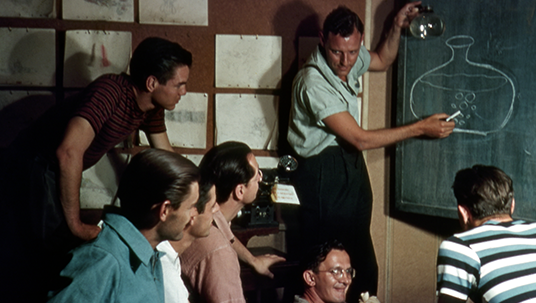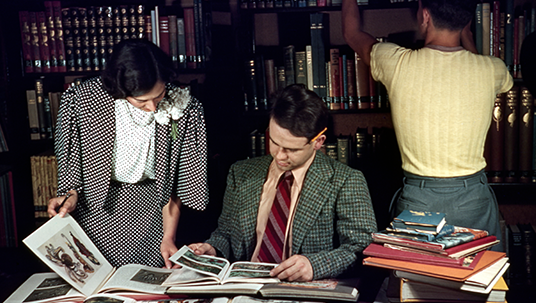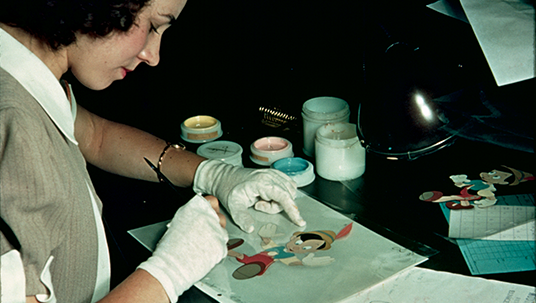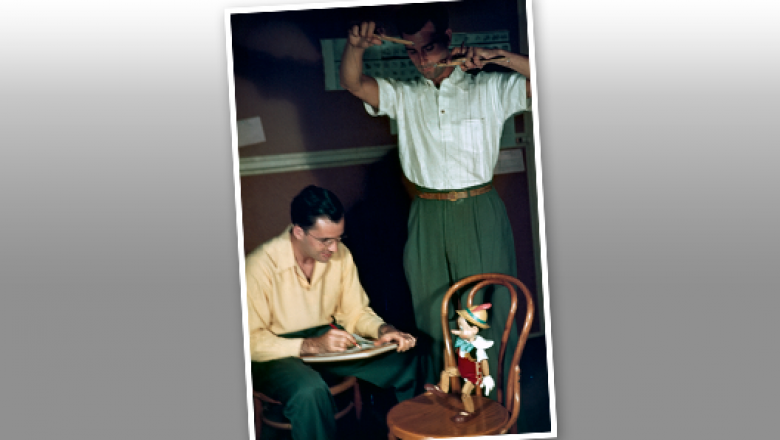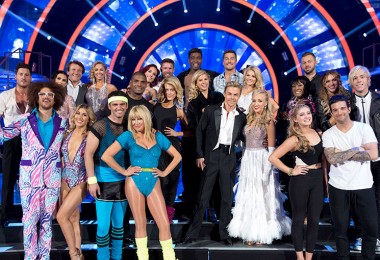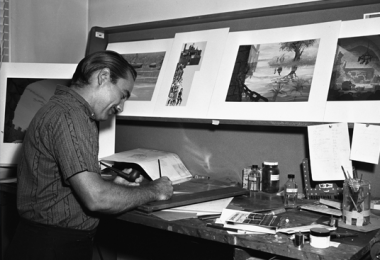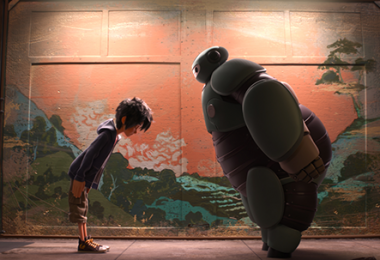As we celebrate 75 years of Walt Disney’s Pinocchio (1940)—heralded by many as the most technically perfect animated film ever made—D23 presents a selection of rare, behind-the-scenes photos of the Disney Studio on Hyperion Avenue (1926–1940), where most of the film’s production took place. In addition to showcasing some of the work put into Walt’s second full-length animated feature, these images offer a rare glimpse into the former Studio’s offices in glorious color.
“We received these extremely rare color slides in the early years of the Archives,” recounts Disney Legend and Walt Disney Archives founder Dave Smith. “While there are many black-and-white photos from the Hyperion days, these are some of the only color images known to exist of that Studio.”
Please enjoy this exclusive trip back 75 years, courtesy of the Walt Disney Archives.
The newly established character model department created dimensional puppets and miniatures that were studied by artists during production. Here, animators Frank Thomas and Art Elliott study a final Pinocchio puppet made by sculptors Wah Ming Chang, Charles Cristadoro, and Bob Jones and used for publicity purposes.
